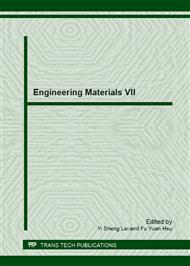p.43
p.49
p.61
p.69
p.77
p.87
p.95
p.105
p.113
The Effect of Heat Treatment on the Performances of Inconel690 Heat Transfer Tube
Abstract:
This article mainly studied the influence rule of heat treatment temperature on the performances of Inconel690 heat transfer tube. The microstructure, mechanical performances and corrosion properties were studied under different heat treated conditions. The optimized heat treatment process was obtained. The conclusions was as follows: with the increase of solution temperature from 1050°C to 1150°C, the mean grain size varied from 12μm to 58μm, the room temperature tensile strength and yield strength reduced gradually, while the elongation elevated gradually. The alloy had a good resistance to pitting corrosion after solutionization during 1090~1100°C.The massive carbides (M23C6) were precipitated along grain boundaries after sensitization processing. And with the increase of sensitization temperature, its morphology transform from tiny semicontinuous to coarsening continuously, multi-layered distribution emerged during higher sensitization temperature range. Along with the sensitization temperature rising, alloy 690 has better resistance to intergranular corrosion. As the sensitization temperature was higher than 750°C with isothermal holding for 2 hours, the desensitization phenomenon occurred, and the ability of anti-intergranular corrosion for alloy 690 could be enhanced distinctly.
Info:
Periodical:
Pages:
77-86
Citation:
Online since:
September 2013
Authors:
Keywords:
Price:
Сopyright:
© 2014 Trans Tech Publications Ltd. All Rights Reserved
Share:
Citation:


